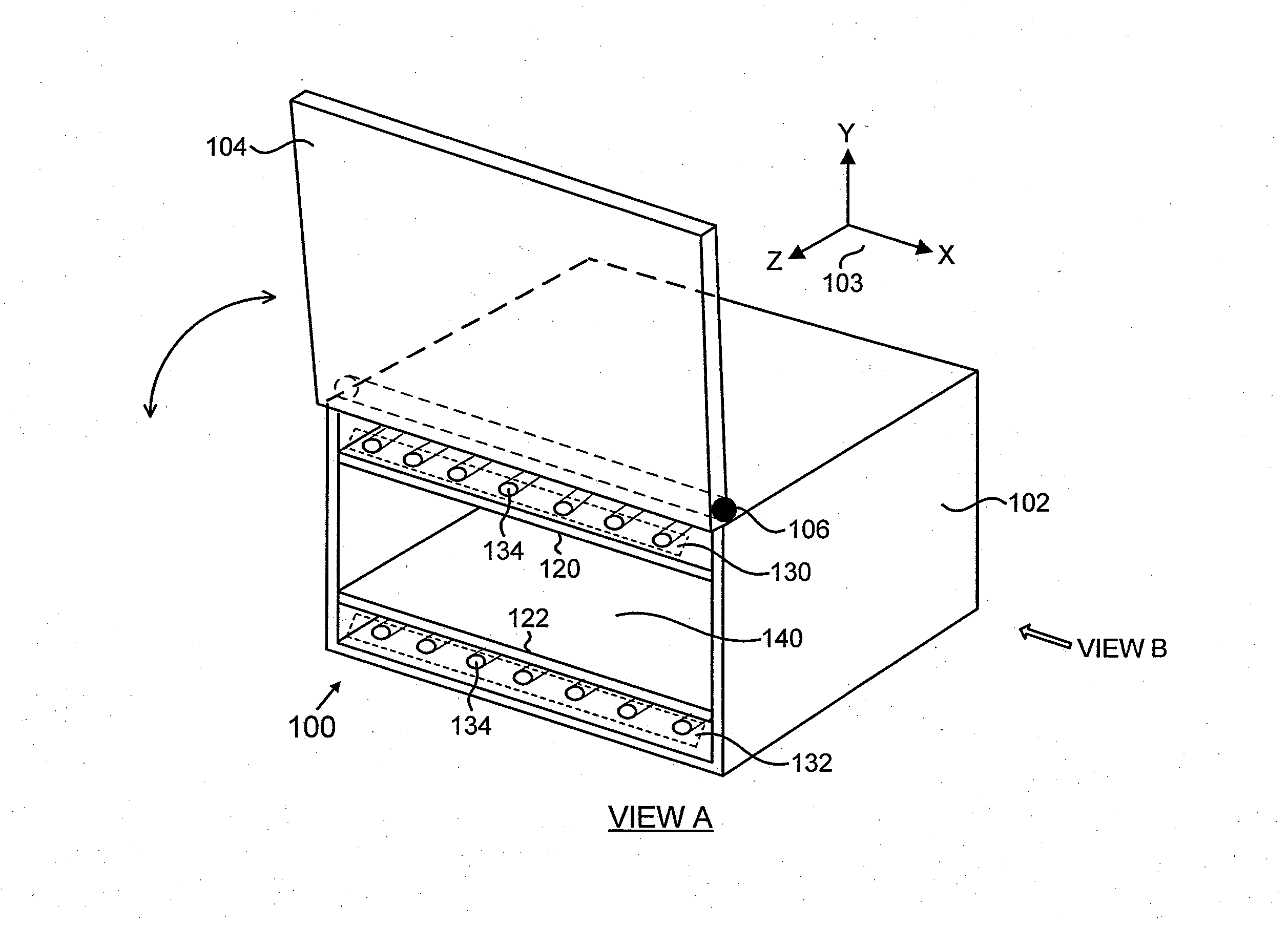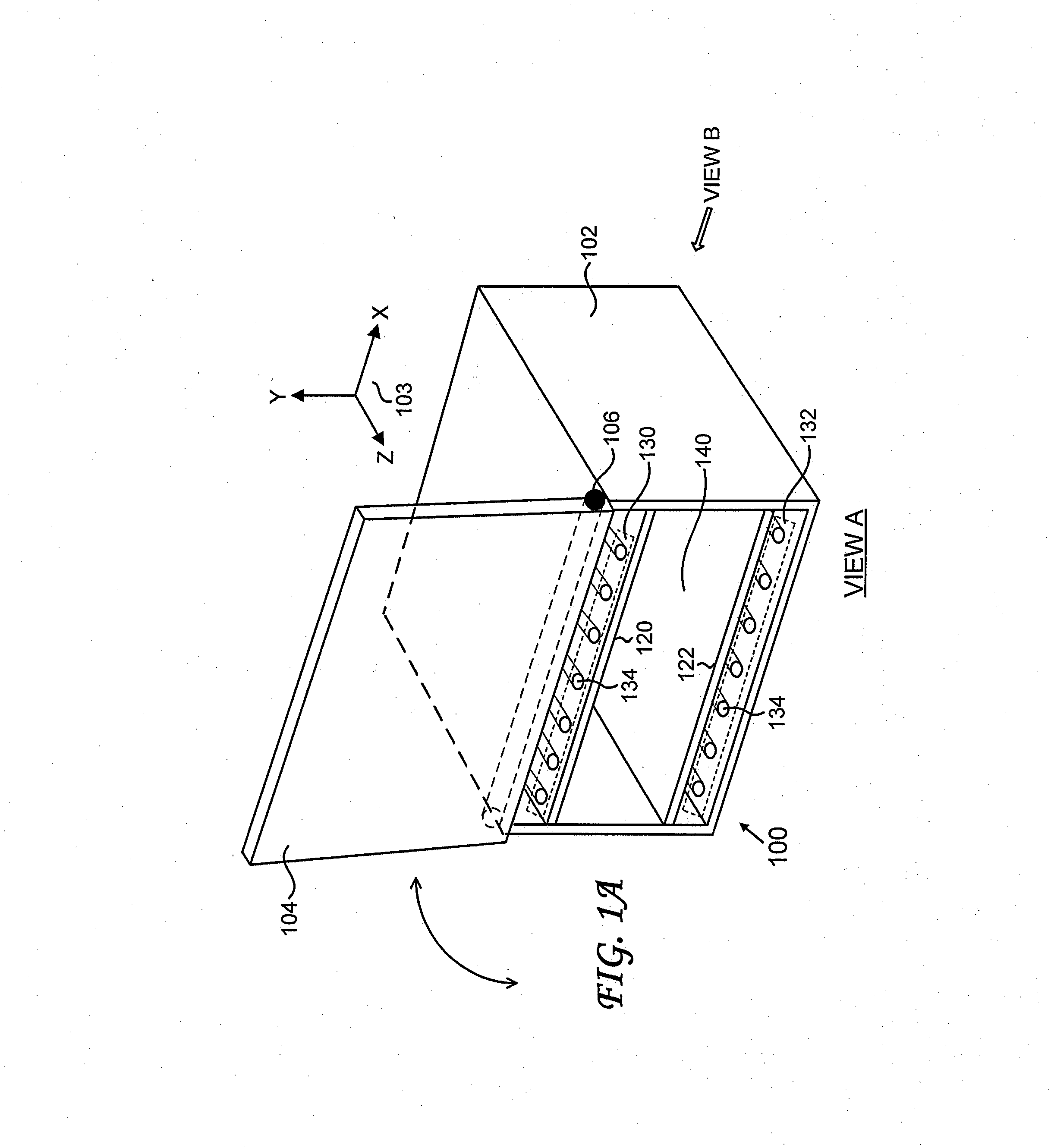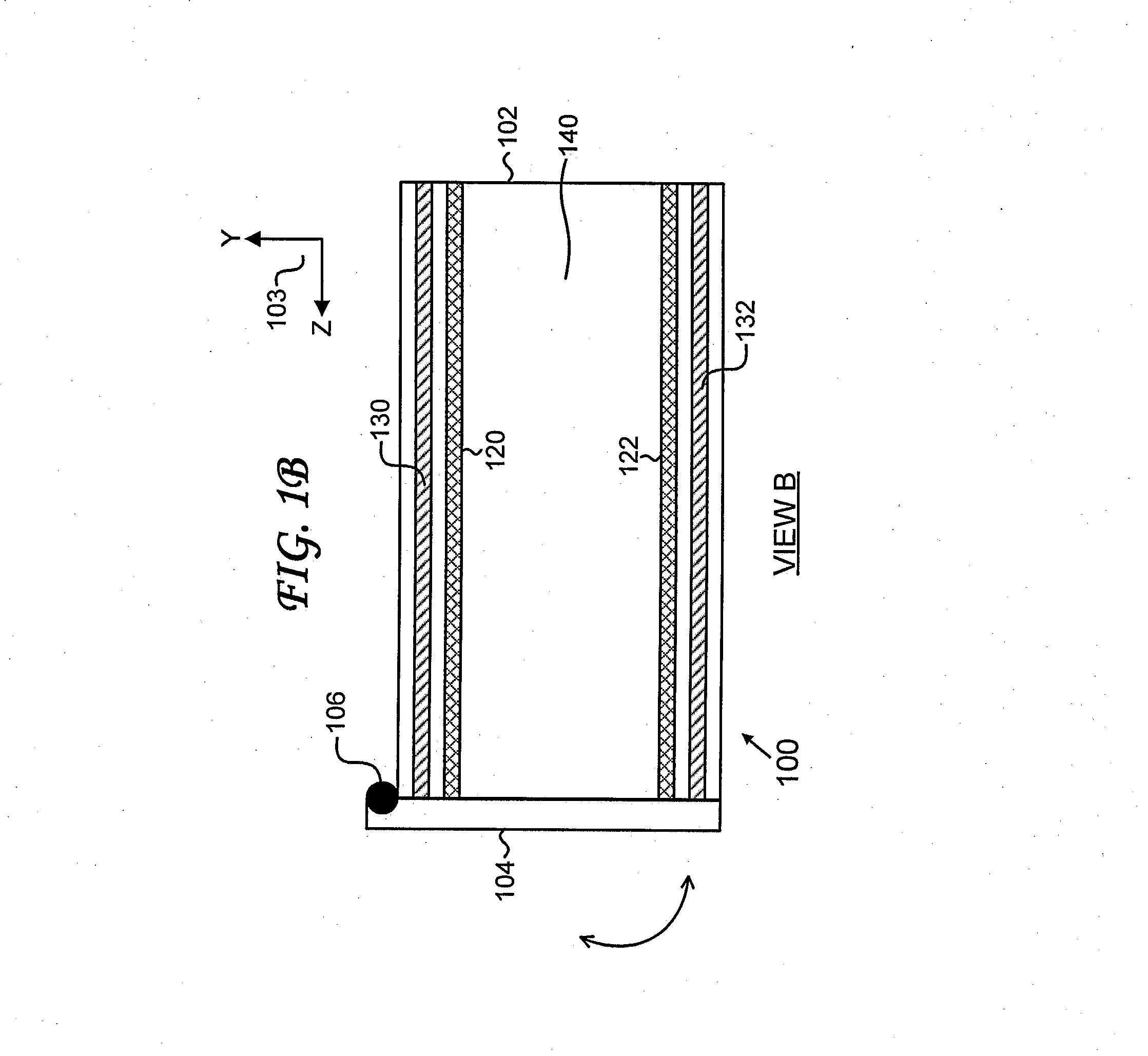Method and Apparatus for Sterilization of Medical Instruments and Devices by Ultraviolet Sterilization
- Summary
- Abstract
- Description
- Claims
- Application Information
AI Technical Summary
Benefits of technology
Problems solved by technology
Method used
Image
Examples
Embodiment Construction
[0024]Ultraviolet irradiation in a specific range of wavelengths (discussed below) can be used to inactivate all pathogen types including, for example, anthrax and C. difficile endospores, S. aureus (antibiotic forms are also known as MRSA), smallpox, viral hemorrhagic fevers, pneumonic plague, glanders, tularemia, and drug-resistant tuberculosis. Pathogens that have a relatively thick cell wall, such as endospores, are more resistant to ultraviolet irradiation because the thick cell wall transmits less ultraviolet radiation; consequently, the ultraviolet radiation intensity inside the cell wall is reduced. With higher intensities or longer exposure times (or a combination of both higher intensities and longer exposure times), however, even the most resistant endospores are readily inactivated by ultraviolet irradiation.
[0025]The effectiveness of ultraviolet irradiation derives primarily from a narrow band of ultraviolet-C (UV-C) radiation about 60 nm wide centered at a wavelength o...
PUM
 Login to View More
Login to View More Abstract
Description
Claims
Application Information
 Login to View More
Login to View More - R&D
- Intellectual Property
- Life Sciences
- Materials
- Tech Scout
- Unparalleled Data Quality
- Higher Quality Content
- 60% Fewer Hallucinations
Browse by: Latest US Patents, China's latest patents, Technical Efficacy Thesaurus, Application Domain, Technology Topic, Popular Technical Reports.
© 2025 PatSnap. All rights reserved.Legal|Privacy policy|Modern Slavery Act Transparency Statement|Sitemap|About US| Contact US: help@patsnap.com



